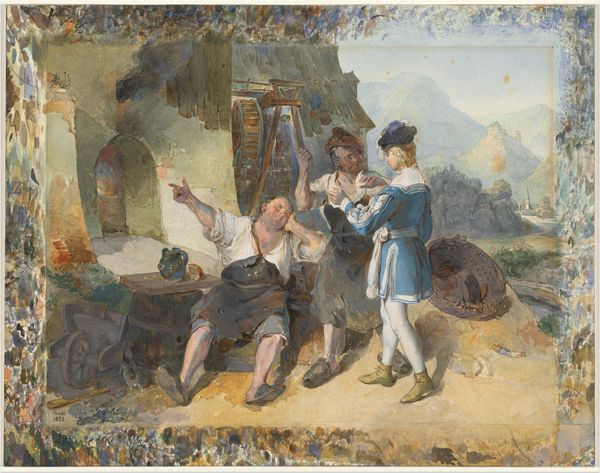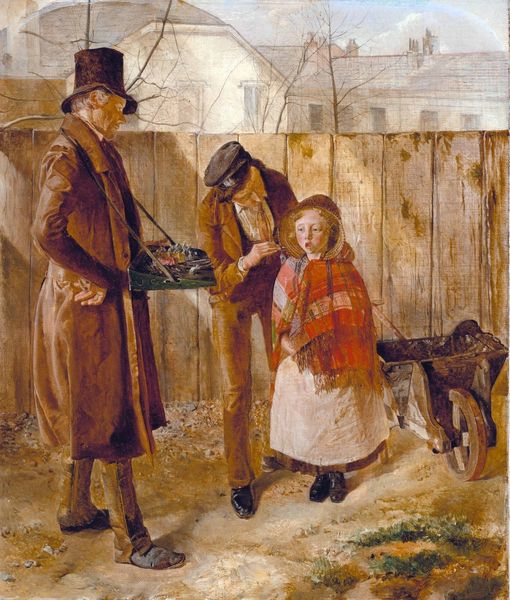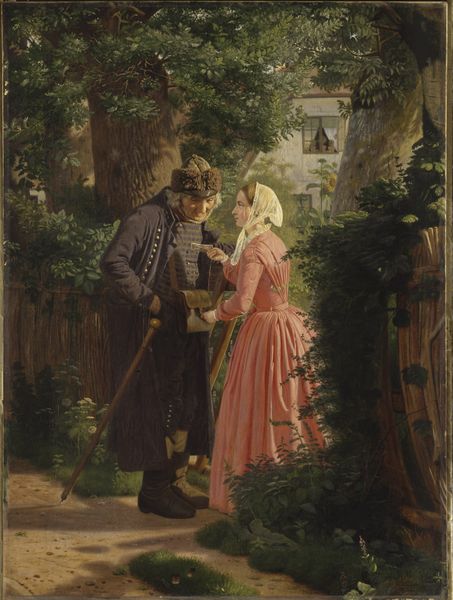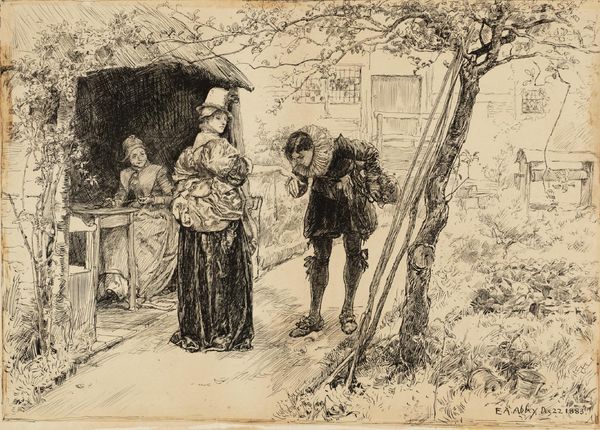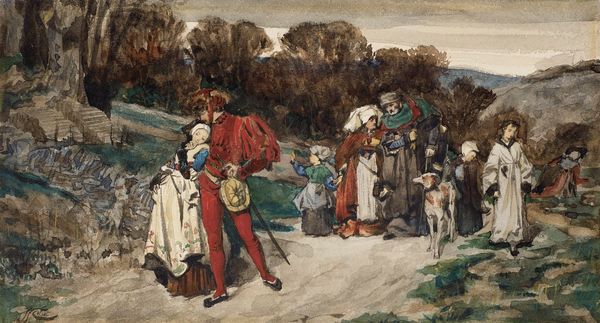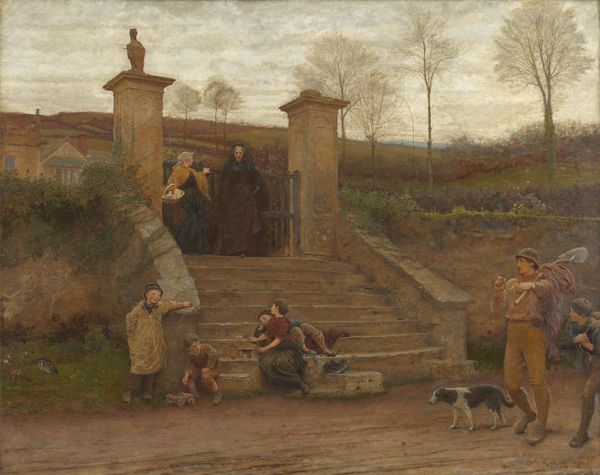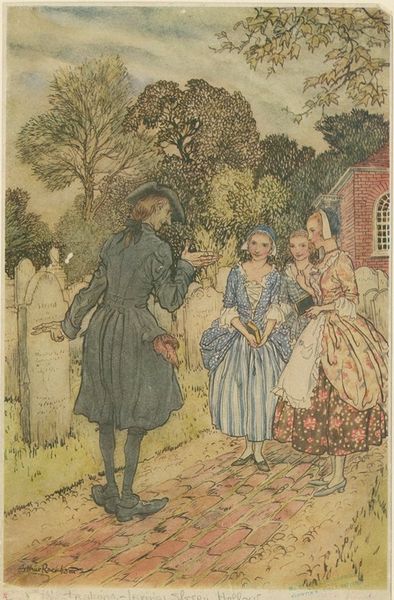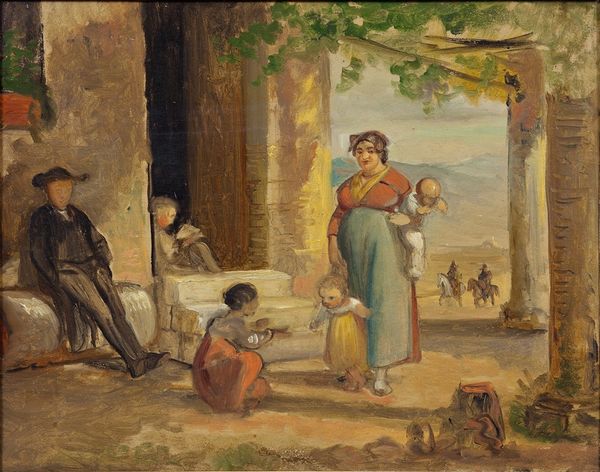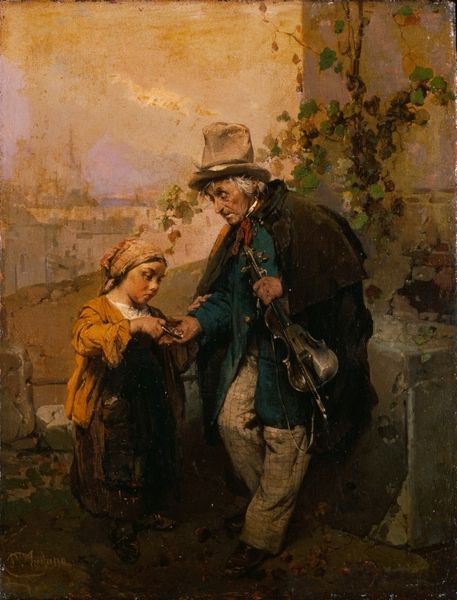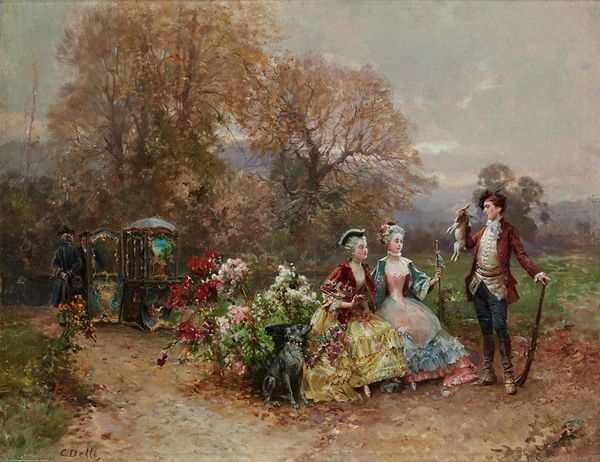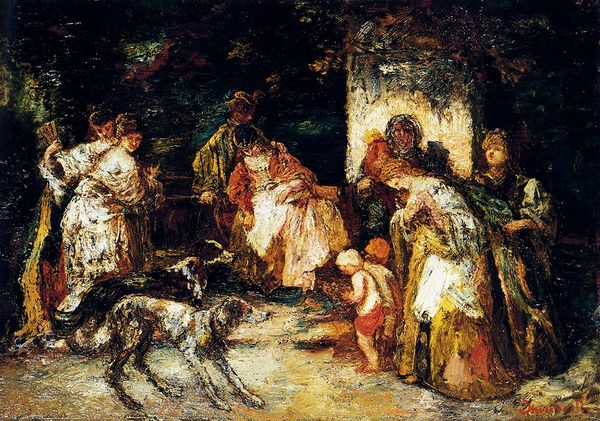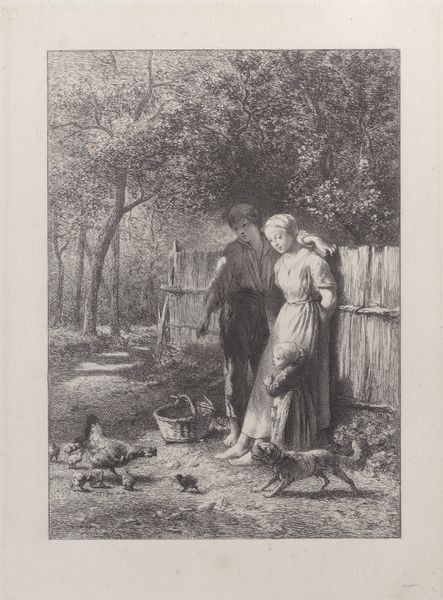
Dimensions: height 385 mm, width 545 mm
Copyright: Rijks Museum: Open Domain
Curator: Look at the hazy, sun-drenched street scene captured in Henry Reynolds Steer's "Man met een kijkkast en een liedverkoopster," dating roughly from 1868 to 1928. It's a fascinating depiction of everyday life, focusing on street vendors. Editor: My immediate impression is of muted elegance. There's a quiet charm, but also a slight melancholy woven into the scene with these washed-out watercolors. The contrast between the refined woman on the left and the street sellers sparks my curiosity. Curator: Precisely! The artwork engages with class disparities within the cityscape. The well-dressed woman and child emerging from what appears to be a gated estate offer a direct counterpoint to the working-class vendors trying to earn their living on the street. Notice the child tugging on her hand, perhaps wanting a glimpse inside the peepshow box. Editor: That peepshow box, it's a visual anchor, isn’t it? And the way Steer captures the hopeful gazes directed toward it… there's almost a devotional quality. Peepshows were popular entertainment. It's like a miniature temple of visual pleasure, and these street vendors become priests and priestesses of spectacle. What could they be showing inside that enchants the woman? Curator: The context is critical here. Steer was painting during a time of huge industrial and social upheaval. Images like these can speak to how entertainment blurred social boundaries. Art allowed audiences of varied classes and backgrounds the same imagery to aspire. Who is being served or disserved is always changing! Editor: The papers clutched by the female vendor mirror that. Text, image, song – were cultural experiences and commodities becoming interchangeable? Curator: Absolutely. Consider the role of women. This song seller reflects the growing opportunities but also the precarity of working-class women. She navigates both performance and survival, her presence demanding attention while the well-to-do woman perhaps holds the possibility for this opportunity. Editor: It seems like Steer has woven layers of social commentary into an accessible, almost quaint, visual narrative. The colours soften what otherwise are the hard facts of their time. Curator: This watercolor, far from being a simple snapshot, encapsulates the layered socio-economic realities of its time, and allows space for contemporary insights. The image urges me to reevaluate assumptions on entertainment's place in socioeconomic access and progress. Editor: For me, the work resonates as a reminder of how the allure of images has consistently shaped and mirrored our desires. The peepshow endures today, only changing the screen we so hope to fixate upon.
Comments
No comments
Be the first to comment and join the conversation on the ultimate creative platform.
